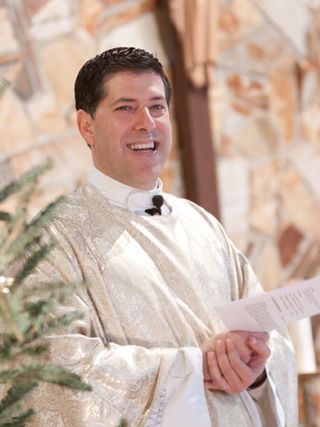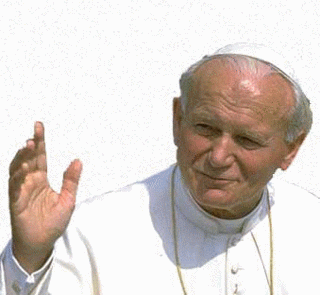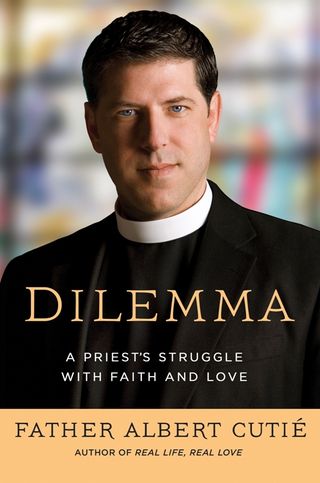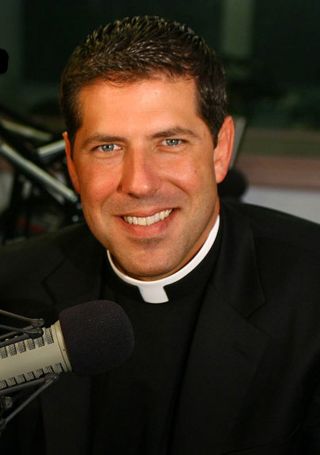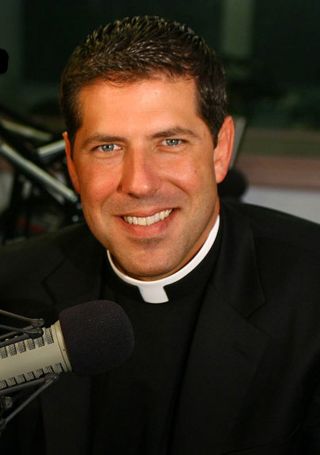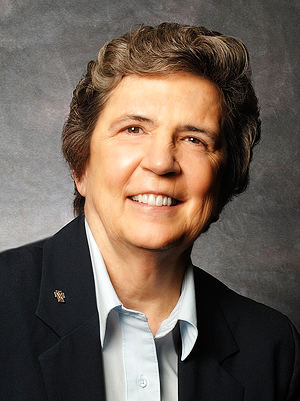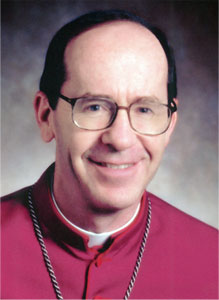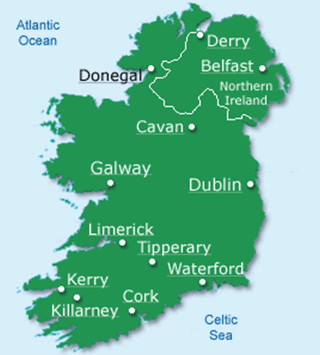
That’s the sensationalistic headline of this story in the New York Times. As usual, it’s by Laurie Goodstein, and as usual she makes significant errors in her reporting that make the story more sensationalistic in a way that (just coincidentally) paints the Holy See in an unfavorable light. (So . . . what’s up with that, Laurie? You’ve been on the beat long enough that you should be better informed on these matters.)
As with previous stories of the same nature, this one involves a document from back in the 1990s that has now come to the attention of the press. It was a letter written by the Apostolic Nuncio of Ireland (that’s basically the Holy See’s ambassador to Ireland, though he also has a liaising role with the local bishops). In the letter the Nuncio—then Luciano Storero—communicated a message to the Irish bishops from the Congregation for Clergy concerning a document that the Irish bishops had drafted on child sexual abuse.
This letter was immediately hailed by groups like SNAP as the “smoking gun” they’ve been waiting for, showing that the Holy See took part in the cover up of sexual abuse, allowing it to be sued in court, humiliated, and have money extracted from it.
You can read (a tiny, low resolution image of) the letter itself here.
Now let’s walk through it and see how the claims made about it stack up against the document itself . . .
APOSTOLIC NUNCIATURE IN IRELAND
N. 808/97
Dublin, 31 January 1997
Strictly Confidential
To: the Members of the Irish Episcopal conference
—their Dioceses
Your Excellency,
The Congregation for the Clergy has attentively studied the complex question of sexual abuse or minors by clerics and the document entitled “Child Sexual Abuse: Framework for a Church Response”, published by the Irish Catholic Bishops Advisory Committee.
So here is what has happened at the time the letter was written: Priests and religious in Ireland abused children. This came to light and caused an enormous scandal. (In fact, it brought down the Irish government.) In response, the Irish bishops conference (in conjunction with the Conference of Religious in Ireland) created an Advisory Committee to draft a document proposing how to respond to cases of child sexual abuse. The result was the document referenced above, which is online here in .pdf form. At least that’s a version of the document. Whether it was the version referenced in the letter is not 100% clear. In any event, this document came to the attention of the Congregation for Clergy in Rome, and now the Congregation for Clergy has asked the Irish nuncio to convey its impressions to the Irish bishops.
Note well: The Congregation for Clergy is not the same as the Congregation for the Doctrine of the Faith. Cardinal Joseph Ratzinger (now Pope Benedict) was the head of the doctrinal body, not the Congregation for Clergy. The head of that in 1997 was Cardinal Dario Castrillon Hoyos. More on him in a bit. For now the important point—given the press’s invariable attempt to read everything Vatican in terms of the pope himself—is that Cardinal Ratzinger/Pope Benedict has no connection with this letter. It wasn’t his department that was involved.
The congregation wishes to emphasize the need for this document to conform to the canonical norms presently in force.
So: The Congregation for Clergy has concerns that provisions in the document did not conform to canon law as it was in 1997. Fair enough. That’s not anything sinister. To give a civil law analogy, it’s a little like warning someone that parts of his proposed law appear to violate the U.S. Constitution. Warning someone that parts of his law appear unconstitutional is not a sinister thing. It’s a way of ensuring justice and avoiding a lot of headaches for everybody.
One might be wrong, and provisions of the law in fact might be fully constitutional (read: canonical), but saying, “Your policy needs to be legal in terms of Church law” is not evidence of evil intent.
The text, however, contains “procedures and dispositions which appear contrary to canonical discipline and which, if applied, could invalidate the actions of the same Bishops who are attempting to put a stop to these problems. If such procedures were to be followed by the Bishops and there were cases of eventual hierarchical recourse lodged at the Holy See, the results could be highly embarrassing and detrimental to those same Diocesan authorities.
So the Congregation for Clergy (who is being quoted in this paragraph; note the open quotation marks) is concerned that some proposals in the Irish Advisory Committee document appear to be contrary to canon law. As a result, bishops acting on those parts of the proposal might take canonical actions against priests that are legally invalid. In other words, there could be miscarriages of justice. So what happens if miscarriages of justice occur? Well, the priests might appeal their case to Rome, and Rome might agree that there was a miscarriage of justice because the law was not applied correctly. In that case the bishop would be put in an embarrassing position.
And that’s quite true. A bishop would be put in an embarrassing and detrimental position if he violated canon law and a miscarriage of justice resulted and his actions had to be undone. There’s nothing sinister about telling a bishop that. People in positions of power need to be reminded regularly that their authority has limits and they must provide justice for those whose cases they handle. The law needs to be followed closely so that we (a) don’t have innocent priests being wrongly convicted and (b) we don’t have predator priests escaping punishment because the law wasn’t followed. The exact same concerns apply in civil courts: We need to follow the law to avoid miscarriages of justice.
Now, you’ll notice something that hasn’t yet been mentioned in this letter: the issue of reporting predators to the police. That hasn’t come up yet. All the discussion so far has been about making sure the Church’s own internal legal system is followed so that we don’t have miscarriages of justice.
How did Laurie Goodstein frame this in her article for the Times? She wrote: “It [the letter] said that for both ‘moral and canonical’ reasons, the bishops must handle all accusations through internal church channels. Bishops who disobeyed, the letter said, may face repercussions when their abuse cases were heard in Rome.”
WHOA! MAJOR MEDIA DISTORTION!
The only “repercussions” mentioned in the letter is the embarrassing situation a bishop would find himself in if he failed to follow the law and a miscarriage of justice resulted and Rome overturns it on appeal. Yet Goodstein makes it sound as if the letter is threatening bishops with some kind of retaliation if they don’t “obey” the letter. This is wrong on several levels. First, the letter is not an ultimatum. It is not a set of orders. It is an advisory statement cautioning the Irish bishops that they need to make sure they follow canon law so that miscarriages of justice don’t happen and then get overturned on appeal. There is no threat of retaliation here.
Worse, Goodstein makes it appear that the Vatican is threatening bishops with retaliation if they report predators to the police. The subject of reporting pedophiles hasn’t even come up yet. And she is wrong when she says that the letter states that “the bishops must handle all accusations through internal church channels,” as opposed (presumably) to reporting predators to the police. But the document says nothing of the kind. There is nothing in the document saying that a bishop must keep information about predators secret. What the Congregation objected to was mandatory reporting. One can think what one likes about the wisdom of mandatory reporting, but there is a big difference between saying, “You must keep all cases of this from the eyes of the police on pain of Vatican retaliation” and saying, “Hey, maybe there needs to be some discretion exercised and it shouldn’t be automatic reporting.”
Goodstein thus implies that the letter suggests something it doesn’t. The letter doesn’t state that the Congregation for Clergy is opposed to reporting predators to the authorities. Instead, it says . . .
In particular, the situation of ‘mandatory reporting’ gives rise to serious reservations of both a moral and canonical nature”.
This is the end of the quotation from the Congregation for Clergy. Note the closing quotation marks.
So the Congregation for Clergy is saying, “We’ve got reservations about the situation of ‘mandatory reporting’ on moral and canonical grounds.” That’s an expression of concern. It’s a cautionary statement, but it is not an order. It’s telling the Irish bishops about an issue that could come up down the road. And how unreasonable is the concern expressed? An overzealous application of a mandatory reporting policy could result in entirely innocent people being put through the wringer and having their reputations and livelihood destroyed.
Would that be moral? Would you like to be on the receiving end of a policy like that? It is easy to see how one might have moral concerns about automatic reporting policies and want to make sure that there are appropriate safeguards to keep innocent people from having their lives destroyed.
It also is easy to see how such a policy could fall afoul of canon law, which contains provisions protecting an individual’s right to his good reputation. An overzealous application of a mandatory reporting policy could unjustly deprive innocent people of their reputation—and more.
And these moral and canonical concerns don’t just apply to priests. Think about the repercussions of a mandatory reporting policy for the victims!
It has been a common experience in years past for people to come to Church authorities to warn them about the behavior of a particular priest but only on condition of confidentiality. They don’t want to get involved with the authorities. They don’t want to be hauled into court and put on the witness stand and forced to relive horrible things that were done to them under cross examination. They don’t want to come to the attention of the media and have their private sexual trauma exposed for the whole world to see.
But a mandatory reporting policy would prevent Church authorities from giving these people the assurances of confidentiality that they seek. It thus could deter them from reporting predators and result in more sexual predation.
Before we get back to the nuncio’s letter, let’s detour for a moment and look at what the proposed Irish policy actually says about reporting:
2.2. Recommended Reporting Policy
2.2.1 In all instances where it is known or suspected that a child has been, or is being, sexually abused by a priest or religious the matter should be reported to the civil authorities. Where the suspicion or knowledge results from the complaint of an adult of abuse during his or her childhood, this should also be reported to the civil authorities.
2.2.2 The report should be made without delay to the senior ranking police officer for the area in which the abuse is alleged to have occurred. Where the suspected victim is a child, or where a complaint by an adult gives rise to child protection questions, the designated person within the appropriate health board/health and social services board should also be informed. A child protection question arises, in the case of a complaint by an adult, where an accused priest or religious holds or has held a position which has afforded him or her unsupervised access to children.
2.2.3 The Advisory Committee recognises that this recommended reporting policy may cause difficulty in that some people who come to the Church with complaints of current or past child sexual abuse by a priest or religious seek undertakings of confidentiality. They are concerned to protect the privacy of that abuse of which even their immediate family members may not be aware. Their primary reason in coming forward may be to warn Church authorities of a priest or religious who is a risk to children.
2.2.4 The recommended reporting policy may deter such people from coming forward or may be perceived by those who do come forward as an insensitive and heavy-handed response by Church authorities. This is particularly so where the complaint relates to incidents of abuse many years earlier.
2.2.5 Nonetheless, undertakings of absolute confidentiality should not be given but rather the information should be expressly received within the terms of this reporting policy and on the basis that only those who need to know will be told.
WOW!
If this policy means what it says then just on suspicion that abuse may be taking place (suspicion being a subjective state that is very easy to come by) you’ve got to report the priest or religious to the police. No provision is made (at least in this section) for distinguishing between suspicions that are credible or well-founded and those that aren’t. Similarly, no provision is made for doing a preliminary investigation. Instead, Church workers are to make the mandatory report “without delay.”
Furthermore, the Advisory Committee is aware that this policy will put victims on the spot and force them to relive their traumas as the authorities handle the case. It is further aware that the policy of mandatory reporting may seem “insensitive and heavy-handed,” “particularly so where the complaint relates to incidents of abuse many years earlier.” Nevertheless, the policy says, if someone comes to you and says, “I want to report a predator priest but I also want to do so confidentially so that I’m not traumatized and humiliated in public or among my own family members” then Irish Church authorities would be supposed to say, “I’m sorry, but our reporting policy does not admit of exceptions, and I can receive your information only under the terms of our reporting policy, so I cannot promise you confidentiality.”
Can you imagine someone in the office of the Congregation for Clergy having concerns of a moral and canonical nature about how such a policy might be implemented?
I can!
In fact, the Advisory Committee itself can recognize why people would have concerns about this exceptionless policy. Otherwise it wouldn’t have gone out of its way to respond in advance and at length to the concerns victims were sure to have.
HAS LAURIE GOODSTEIN EVEN READ THIS POLICY? DID SHE DO THE TEN SECONDS OF GOOGLING IT TOOK ME TO FIND IT? IF SO, WHY DIDN’T SHE SHARE THE REPORT’S CONCERNS ABOUT THE FEELINGS OF VICTIMS OF SEXUAL ABUSE WITH HER AUDIENCE? THESE ARE QUESTIONS HER BOSSES AS THE NEW YORK TIMES SHOULD ASK HER.
Now, back to the nuncio’s letter:
Since the policies on sexual abuse in the English speaking world exhibit many o[f] the same characteristics and procedures, the Congregation is involved in a global study of them. At the appropriate time, with the collaboration of the interested Episcopal Conferences and in dialogue with them, the Congregation will not be remiss in establishing some concrete directives with regard to these Policies.
So . . . the Congregation for Clergy is hardly coming off as sinister here. To try to find an effective way to deal with these situations, it’s doing a study of how these things are handled in the English-speaking world. It plans to involve the relevant bishops’ conferences in the discussion, so they will have their say. And when this is all done it will issue concrete directives.
This is not the language of coverup. It’s the language of, “We want to find an effective solution to this problem, and we want to work with you to make that happen.”
For these reasons and because the above mentioned text is not an official document of the Episcopal Conference but merely a study document, I am directed to inform the individual Bishops of Ireland of the preoccupations of the Congregation in this regard, underlining that in the sad case of accusations of sexual abuse by clerics, the procedures established by the Code of Canon Law must be meticulously followed under pain of invalidity of the acts involved if the priest so punished were to make hierarchical recourse against his Bishop.
Asking you to kindly let me know of the safe receipt of this letter and with the assurance of my cordial regard, I am
Yours sincerely in Christ,
+Luciano Storero
Apostolic Nuncio
And so the final part of the letter gently reminds the individual Irish bishop that the Advisory Committee’s proposal is just that—a proposal, a study document, not something that has been passed and approved and that the bishop is obliged to follow. Further, it’s a problematic document and if the bishop acts on some of its provisions it could lead to a miscarriage of justice that might blow up in his face on appeal. But the Congregation for Clergy is working on a solution for how to handle this kind of horrible situation. Please don’t implement the flawed document; give us the time to work with the relevant bishops’ conferences to find the needed solution.
That’s the takehome message of this letter.
Contrast that to Laurie Goodstein’s opening paragraph:
A newly disclosed document reveals that Vatican officials instructed the bishops of Ireland in 1997 that they must not adopt a policy of reporting priests suspected of child abuse to the police or civil authorities.
This is highly misleading. The document was of an advisory nature that expressed cautions and concerns. It did not “instruct” the bishops that they “must not adopt a policy of reporting priests suspected of child abuse to the police or civil authorities.” It advised the bishops that there were serious moral and canonical reservations about the specific reporting policy that had been proposed to them.
And it expressed those concerns with good reason!
If I were a priest or a victim, or someone who just knew a priest or a victim, or just a bystander (which is what I am), I’d have concerns about that policy.
Now, please bear in mind that I am not saying that the Congregation for Clergy’s concerns were all well founded. The letter is so brief and is expressed in such general terms that we don’t know what their specific concerns were, either regarding the reporting policy or other aspects of the proposal. They allude in addition to multiple concerns of a canonical nature (apparently concerning the Code of Canon Law’s penal provisions).
Whether they were correct in all their concerns I don’t know. I do know that they were headed at this time by Cardinal Castrillon Hoyos, who has a particular history on this subject. And I also know that the letter does not come off as the sinister, “under no circumstances tell the authorities” document the press is representing it as.
Of course, that won’t stop the New York Times and other media outlets, and lawyers, from trying to milk this for all it’s worth.
What do you think?

